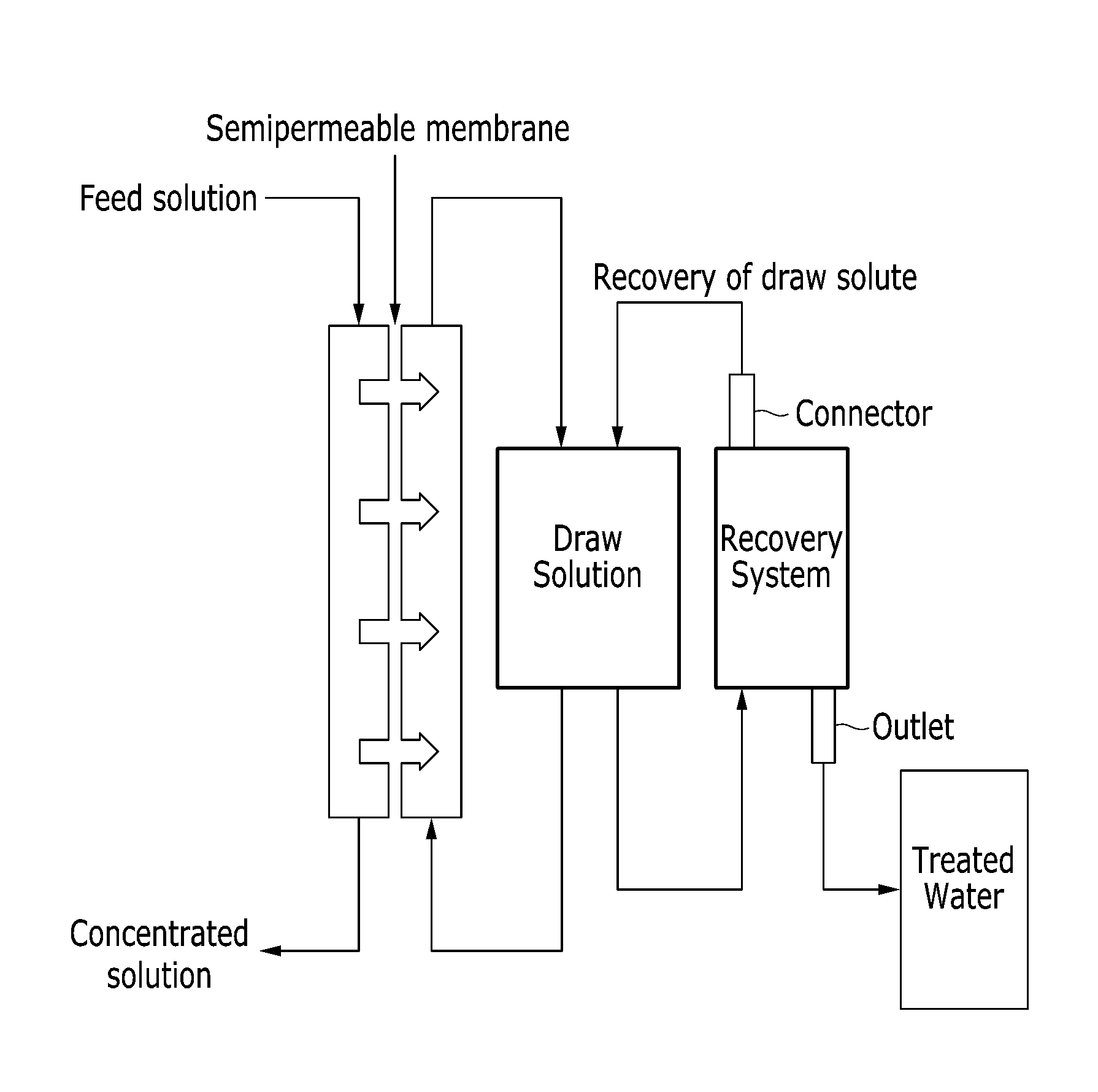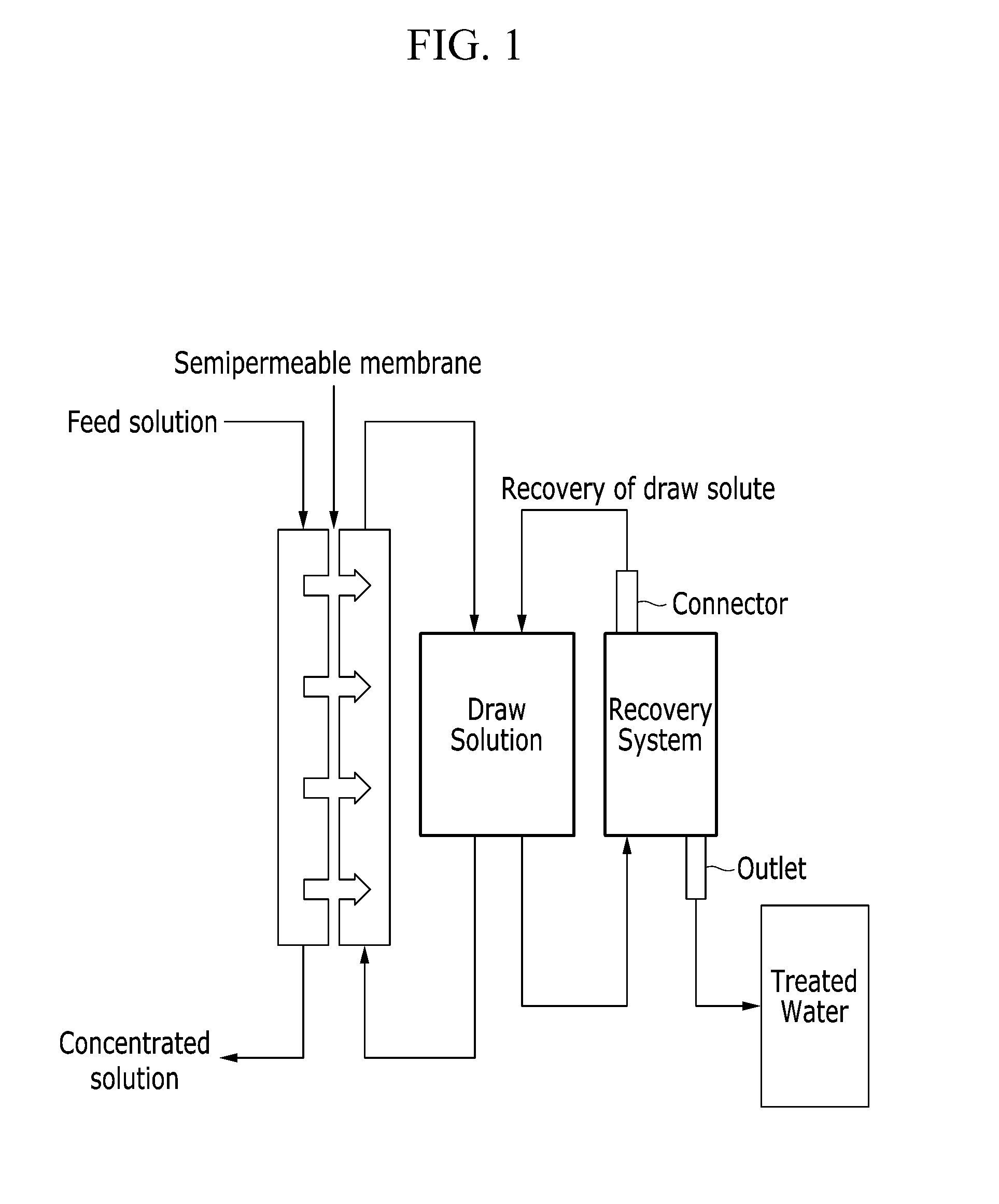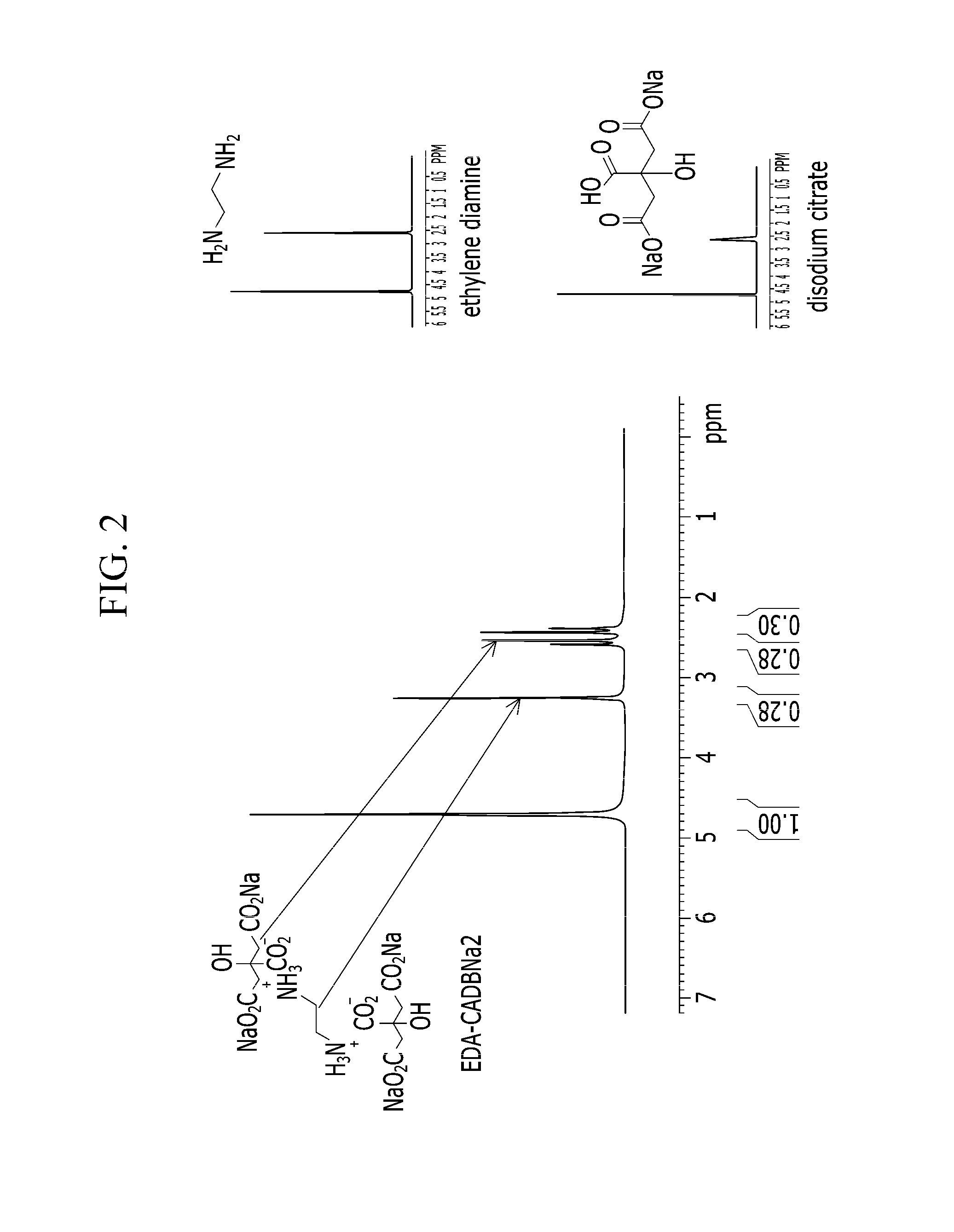Draw solutes comprising alkyl ammonium salt compounds
a technology of alkyl ammonium salt and draw solute, which is applied in solvent extraction, multi-stage water/sewage treatment, separation processes, etc., can solve the problems of difficult complete elimination of ammonia, high energy consumption, and high energy consumption of the removal of the draw solute including the above compound, and achieves low level of reverse solute flux, high osmotic pressure, and easy production
- Summary
- Abstract
- Description
- Claims
- Application Information
AI Technical Summary
Benefits of technology
Problems solved by technology
Method used
Image
Examples
synthesis example 1
Reaction Product of Ethylene Diamine and Disodium Citrate
[0073]4.51 g of ethylene diamine (purchased from Kanto Chemical Co. Ltd., molecular weight: 60.108) and 39.47 g of disodium citrate sesquihydrate are reacted in 150 mL of water (solvent) at a temperature of 20° C. for 60 minutes, and then the reaction product is precipitated in methanol as a solid. The solid product thus obtained is filtered and dried in a vacuum oven.
[0074]An NMR analysis is made for the obtained alkyl ammonium salt compound being dissolved D2O by using 300 MHz Bruker NMR equipment. The NMR spectrum of the compound is shown in FIG. 2: 1H NMR (300 MHz, D2O), δ (ppm) 3.25 (s, 4H), 2.58 (d, 4H, J=12 Hz), 2.409, (d, 4H J=12 Hz).
[0075]From the results of FIG. 2, the reaction product of disodium citrate and ethylene diamine may show a down-shift at a CH2 peak.
[0076]The molecular weight of the alkyl ammonium salt compound is calculated and compiled in Table 1.
synthesis example 2
Reaction Product of Tetraethylene Pentamine and Disodium Citrate
[0077]7.572 g of tetraethylene pentamine (purchased from Kanto Chemical Co. Ltd., molecular weight: 189.30) and 52.622 g of disodium citrate sesquihydrate are reacted in water (solvent) at a temperature of 20° C. for 24 hours, and then the reaction product is precipitated in methanol as a solid. The solid product thus obtained is filtered and dried in a vacuum oven.
[0078]An NMR analysis is made for the obtained alkyl ammonium salt compound being dissolved D2O by using 300 MHz Bruker NMR equipment. The NMR data are as follows: 1H NMR (300 MHz, D2O), δ (ppm) 2.65˜3.40 (m, 16H), 2.58 (d, 10H, J=12 Hz), 2.45 (d, 10H, J=12 Hz).
[0079]The molecular weight of the alkyl ammonium salt compound is calculated and compiled in Table 1.
synthesis example 3
Reaction Product of Polyethylene Imine and Disodium Citrate
[0080]6.45 g of polyethylene imine (purchased from Aldrich Co. Ltd., molecular weight: Mn=600, Mw=800) and 39.47 g of disodium citrate sesquihydrate are reacted in water (solvent) at a temperature of 20° C. for 24 hours, and then the reaction product is precipitated in methanol as a solid. The solid product thus obtained is filtered and dried in a vacuum oven.
[0081]An NMR analysis is made for the obtained alkyl ammonium salt compound being dissolved D2O by using 300 MHz Bruker NMR equipment. The NMR data for the polyethylene imine as used are shown in FIG. 3 and the NMR data for the compound thus prepared are shown in FIG. 4: 1H NMR (300 MHz, D2O), δ(ppm) 2.65˜3.40 (m, 4H), 2.58 (d, 2H, J=12 Hz), 2.45 (d, 2H, J=12 Hz).
PUM
| Property | Measurement | Unit |
|---|---|---|
| Osmotic pressure | aaaaa | aaaaa |
| Molar mass | aaaaa | aaaaa |
| Molar mass | aaaaa | aaaaa |
Abstract
Description
Claims
Application Information
 Login to View More
Login to View More - R&D
- Intellectual Property
- Life Sciences
- Materials
- Tech Scout
- Unparalleled Data Quality
- Higher Quality Content
- 60% Fewer Hallucinations
Browse by: Latest US Patents, China's latest patents, Technical Efficacy Thesaurus, Application Domain, Technology Topic, Popular Technical Reports.
© 2025 PatSnap. All rights reserved.Legal|Privacy policy|Modern Slavery Act Transparency Statement|Sitemap|About US| Contact US: help@patsnap.com



